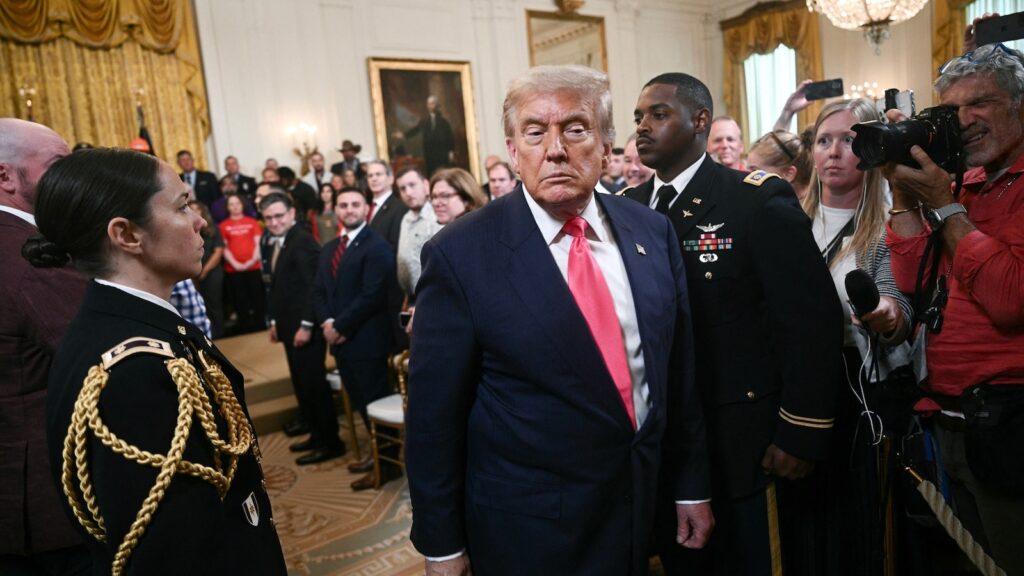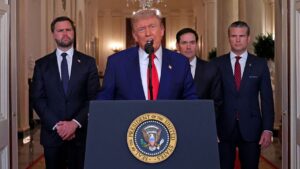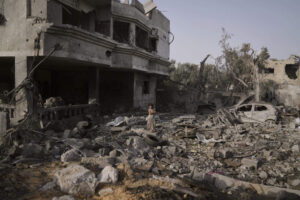
WASHINGTON, D.C. – A week after President Donald Trump ordered a U.S. attack on three Iranian nuclear sites, the explanations and descriptions of the event continue to spark questions about the actual damage inflicted and the true objectives behind the strikes.
Immediate Impact
President Trump announced the attack on June 21, targeting key Iranian nuclear facilities, including a uranium enrichment site in Fordo, a facility in Natanz, and the Isfahan Nuclear Technology Center. The strikes were justified on the grounds of Iran’s non-compliance with international nuclear regulations.
The president, along with Defense Secretary Pete Hegseth, initially claimed that Iran’s nuclear capabilities had been “obliterated.” However, preliminary assessments, including those from the Pentagon’s own intelligence wing, have painted a more nuanced picture.
Key Details Emerge
On Sunday, Defense Secretary Hegseth reiterated the success of the mission, stating, “It was clear we devastated the Iranian nuclear program.” However, Joint Chiefs Chairman Gen. Dan Caine advised caution, noting that a full damage assessment was still underway.
“All of our precision munitions struck where we wanted them to strike and had the desired effect,” stated Hegseth, emphasizing the destruction of capabilities at the primary target.
Pentagon’s Initial Damage Report
Reports emerged on Tuesday indicating that the Defense Intelligence Agency’s initial assessment suggested the attack may have set back Iran’s nuclear program by only a few months. Secretary of State Marco Rubio condemned the leaks but maintained that significant damage was done.
Rubio disclosed that bunker-buster bombs targeted ventilation shafts at Fordo’s fortified facility, yet acknowledged the difficulty in assessing the full extent of the damage.
By the Numbers
- 3: Number of Iranian nuclear sites targeted
- 200-300 feet: Depth of Fordo’s facility within a mountain
- 2: Number of entrances sealed off by the bombing
Background Context
The attack followed reports of Iranian non-compliance with nuclear regulations, leading to heightened tensions between the U.S. and Iran. The timing of the strikes coincided with escalating hostilities between Iran and Israel.
Rafael Grossi, Director General of the International Atomic Energy Agency, suggested that some enriched uranium may have been moved prior to the attack, a claim refuted by President Trump.
Expert Analysis
According to two sources familiar with the DIA’s classified report, while the bombing effectively sealed off entrances to two of the sites, much of the damage was confined to above-ground structures, leaving the lower levels intact.
Secretary Hegseth, during a Thursday briefing, emphasized the ongoing nature of the damage assessment process, stating, “We’re watching every aspect.”
Regional Implications
Despite claims of obliteration, the attack’s broader impact appears to center on achieving a ceasefire between Iran and Israel. Secretary Hegseth highlighted this outcome as a strategic victory, underscoring the use of American military might.
President Trump echoed this sentiment, asserting that the strikes effectively ended hostilities, while Iranian officials, including Foreign Minister Abbas Araghchi, contested the extent of the damage.
What Comes Next
On Capitol Hill, lawmakers received a classified briefing on the strikes. Republican Rep. Greg Murphy stated that the mission’s goal was not to eliminate Iran’s enriched uranium but to target specific aspects of its nuclear program.
“The purpose of the mission was to eliminate certain particular aspects of their nuclear program. Those were eliminated,” said Murphy.
As the situation continues to develop, the international community awaits further assessments and potential diplomatic repercussions from the attack.







